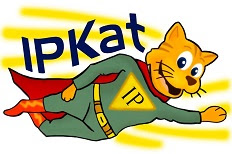
En Chile reconocen a «Alfarería de Quinchamalí» como Denominación de Origen
 El Instituto Nacional de Propiedad Industrial de Chile (INAPI) otorgó el reconocimiento a la «Alfarería de Quinchamalí» como Denominación de Origen (D.O.). El signo tiene como titulares a la Unión de Artesanos de Quinchamalí tras un proceso iniciado en octubre de 2013.
El Instituto Nacional de Propiedad Industrial de Chile (INAPI) otorgó el reconocimiento a la «Alfarería de Quinchamalí» como Denominación de Origen (D.O.). El signo tiene como titulares a la Unión de Artesanos de Quinchamalí tras un proceso iniciado en octubre de 2013.
El registro Nº 1144015 está referido a la D.O. «Alfarería de Quinchamalí» para productos de la clase 21 del nomenclátor con el siguiente contenido indicado en la resolución: Piezas de alfarería del tipo utilitaria y ornamental, de color negro logrado por la quema y el ahumado directo en base a combustible de guano o paja, decorado con elementos fitomorfos o geométricos pintados en blanco sobre el negro de la pieza;de la clase 21 del Clasificador Internacional de Niza.
Según indica su solicitud corresponde a la alfarería producida en localidades de Quinchamalí y Santa Cruz de Cuca, comuna de Chillán, Provincia de Ñuble, Octava región del Bio-Bio.Chile.
Coordenadas UTM correspondientes a la localidad de Quinchamalí 19H 195256,53025; 5941299, 30781, 19H 193583,76482; 5939253,16299, 19H 196890,16663; 5939138,04115, 19H196233,62327; 5936992,82289.
Coordenadas UTM correspondientes a la localidad de Santa Cruz de Cuca 19H 193282,87296; 5936969,34912, 19H 195883,94256; 5934819,84481.
En una ceremonia realizada en el Centro de Eventos de Quinchamalí, el Director Nacional del INAPI Maximiliano Santa Cruz, hizo entrega del título del signo distintivo con el que se busca promocionar y proteger comercialmente productos típicos del país, fomentando el desarrollo local. Con éste, son 12 los productos que cuentan con el sello.
Para Mónica Venegas, Presidenta de la Unión de Artesanos de Quinchamalí este reconocimiento es “algo
muy importante por lo que hemos luchado casi 2 años. Si bien es cierto, nuestro trabajo es algo único que se realiza en el país, pero es fundamental destacarlo, porque nos comparan con otras gredas y tenemos que explicar nuestro discurso; que nuestro trabajo es manual, ancestral, que no ha cambiado con el tiempo....por lo que esta Denominación de Origen nos da el sello, la certificación, que sí somos nosotras las creadoras de este oficio, de este arte”.
Fuente: Constanza Zülch (Comunicaciones INAPI)

.jpg)


































